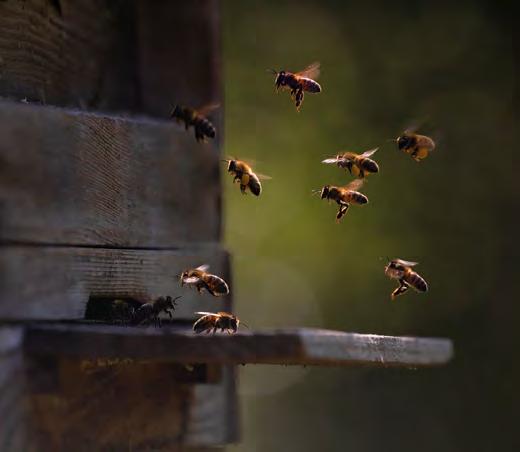
2 minute read
Nature mythbusters
from Wild Magazine Winter 2022
by essexwt
Nature
Mythbusters
Once you dive into the wonderful world of nature, you will quickly learn that our ecosystem is extraordinary and there is always a new species to discover or a new spectacle to experience. But on your unending journey of discovery, watch out for nature myths! Often widespread and passed down from generation to generation, there are plenty of nature misconceptions out there. We’ve picked three well-believed nature ‘truths’. Do you know which ones are fact and which are fiction?

Bees always die when they sting you
Have you ever been stung by a bee? Many people believe that once a bee stings you, it dies. This can leave you feeling unexpectedly sorry for the tiny but mighty creature doing the stinging.
Well not to fear! Out of over 250 species of bees that live in the UK, only one species actually dies after it stings you – the European honeybee. On top of that, it is only female bees that have stingers. If threatened, the vast majority of bees will simply sting you and then retract their stinger and bumble off to the next flower.
Moles are blind
Small yet incredibly powerful, moles spend a huge proportion of their time burrowing and digging around underground. As a result, moles are amongst some of the least-studied mammals in the country, and therefore often misunderstood.
A great example of this is the idea that moles are blind or that they don’t even have eyes. This is in fact… a myth. Always below our feet, in small tunnels and surrounded by dark soil, moles don’t have a huge need for exceptionally good eyesight. They definitely do have eyes though and although they are believed to be colourblind and near-sighted, they are particularly good at detecting light. This is a very useful tool for determining when they might have dug the wrong way!

Red sky at night, shepherd’s delight Red sky in the morning, shepherd’s warning

We all know this old wives’ tale, but can we really trust it? The answer is yes… for the most part. This commonly-used saying is only true within mid-latitude areas, which includes the UK, where weather systems predominantly travel from west to east. But how does it work?
You might know that high pressure means clear skies. Well, it also means more highly concentrated particles which are very effective at scattering the blue light within the sun’s rays. This leaves the red and orange light to take centre stage. Therefore, a high-pressure system is indicated by a very red sky.
If the red sky is seen at sunset (to the west) then we know the high-pressure system is on its way to us, bringing gloriously clear skies. However, if we have a red sky in the morning (to the east) then we know the high-pressure system has passed us, leaving space for the low-pressure system to swoop in and bring us a drizzly, grey day.







